One of the main things we hear from you — our wonderful audience — is that coming up with ideas for new content can be super difficult. Trust me, we get it (and have been there ourselves).
Sometimes, it’s nice to have inspiration to help get the wheels moving in your head for what you can do to 10x your marketing.
And so, as you already know from the title of this chapter, we are going to fill you in on every type of content you can add to your marketing calendar and distribute to your audience to provide value and further your brand’s reputation.
Ready for some great new content ideas? Yeah, I know you are — let’s do this. But first…
So, to help you decide which content types to add to your marketing calendar, I thought you’d dig a super comprehensive list of ideas, complete with examples of how other marketers have used them successfully.
Sound good?
This post is not designed for you to try everything. It’s meant to serve you up ideas that just might work. And the links provide additional context on how to start each tactic.
So. With that. Here’s the comprehensive list of the best marketing content types on the Internet.
I say essential here because these come ready-made in your CoSchedule calendar. Let’s check out these basic content types:
1. Articles
You likely have company news, product announcements, and a ton of other stories that deserve to be told. Like a traditional newspaper or magazine publishes articles, you can, too.
As Joe Pulizzi, the godfather of content marketing likes to say, companies are now publishers. So it’s perfectly acceptable for marketers to borrow ideas from the traditional publishing world to better engage their audiences.
2. Audio
While podcasting is becoming more popular, there’s also a lot of opportunity to turn the written word into audio content.
With easy-to-use tools like Audacity, you can record yourself reading your e-books, blog posts, and course lessons out loud, host the audio on a service like Libsyn, and embed the audio files in your content with podcast plugins like the Podcast Motor Player we use on the CoSchedule blog, or fusebox, the Smart Podcast Player from Pat Flynn.

3. Blog Posts
Blog content can take many different formats—how to, list, question, why, etc.—and usually serves to educate prospective customers. Blog posts are usually at least 1,500 words long and help your audience solve a problem on their own, empowering them to become amazing at what they do (and subsequently give them more reason to use the product or service you’re selling).
Studies have found those who blog regularly are most likely to reach their goals.
4. Case Studies
A case study shares a customer’s success story they experienced when using your product or service. These can take multiple different formats like video or written word, and are a robust testimonial that encourages prospective customers to consider your business as they look to resolve similar challenges.
A common formula for case studies covers what the problem was before implementing a change, how the customer changed, and what the results were after the change.
5. E-Books
E-books are an excellent way to break up long-form content into digestible chapters. An easy way to start an e-book is to select existing blog posts that flow logically together to repurpose your existing content.
6. E-Courses
Here at CoSchedule, we recently launched the Actionable Marketing Institute, which offers a collection of marketing courses designed to prepare marketers for industry trends and provide them with essential skills to help get their marketing operations off the ground. We offer a few free courses, along with a paid collection of all courses with downloadable templates, complimentary videos, quizzes, certifications, and much more.

Another method for implementing an e-course could be as simple as setting up marketing automation with your email service provider. Upon signing up for a specific email list, you could email each lesson to your students.
7. Email Marketing
Email marketing is one of the most effective ways to consistently reach your audience. In its simplest definition, this tactic involves curating and sending valuable content to your subscribers.
8. Infographics
Infographics deliver research in an easy-to-understand, visual layout. Since they’re typically long and narrow, they’re the most-shared type of content, particularly because they’re naturally optimized for Pinterest.
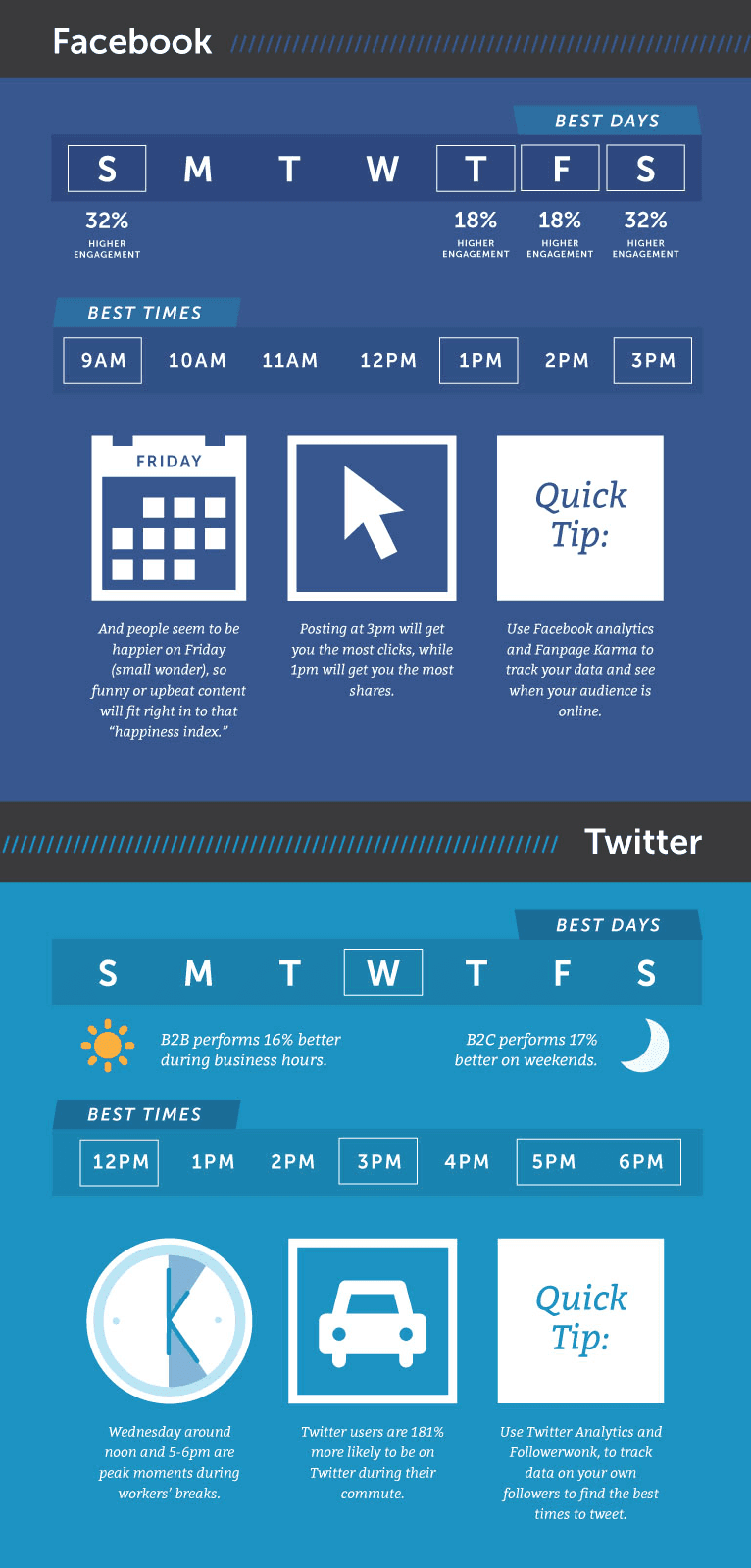
Recommended Reading: How To Make An Infographic In 7 Easy Steps
9. Newsletters
Newsletters round up your recent content, content around a theme, or recent events happening/coming up at your business to deliver a ton of value to your audience in one piece of content.
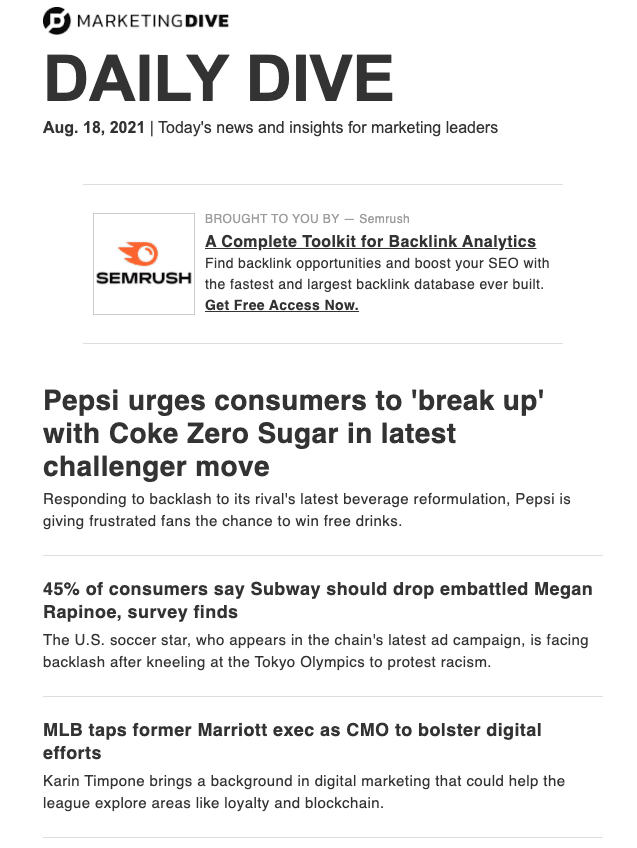
E-newsletters are super popular these days, and email automation services like Salesforce Marketing Cloud can make it easy for you to put out consistent, quality email newsletters.
10. Photos
Great content with poor design is still poor content. Sometimes, it is necessary for you to plan photo shoots to get your own custom photography and avoid stock.
With CoSchedule, you can manage those shoots as projects on the marketing calendar where you organize everything else.
Memes, animated GIFs, comics, cartoons, and even screenshots can all be valuable visual content.
Recommended Reading: How To Make The Best Social Media Images The Easy Way (+128 Free Images)
11. Podcasts
Podcasts are an effective way to reach someone on the go, commuting, or while they shower. Seriously. More than 117 million Americans listen to podcasts monthly, and that number is only growing.
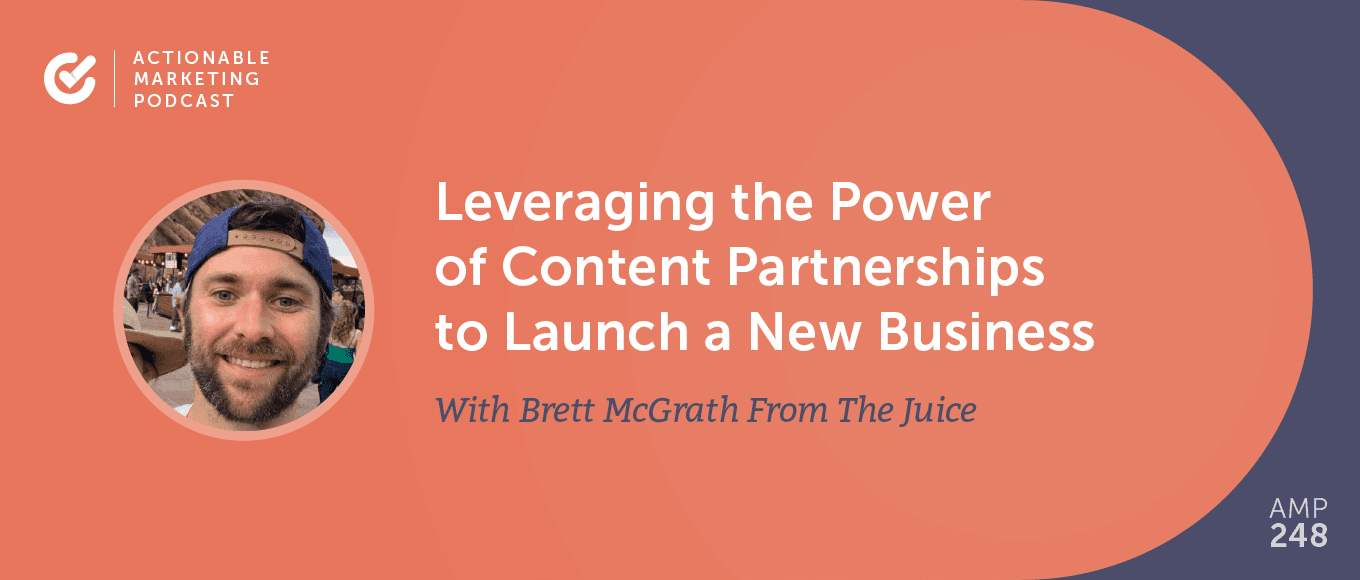
Think of this content type like an educational or entertaining way to reach your audience through audio, distributed through outlets like iTunes, Stitcher, SoundCloud, Google Play, and Spotify.
Recommended Reading: How To Start A Podcast (Authentic Advice From Someone Who’s Done It)
12. Presentations
Webinars, Meetups, conferences, and other speaking opportunities often require decks as visual aids. You can easily repurpose and distribute those presentations and speaking points with SlideShare. Afterward, you can then embed that SlideShare into blog posts like this example:
13. Promotions
Special promotions can cover a lot in the marketing world. An idea here is to plan a promotion around an industry event, holiday, season, or other timely events.

For example, online stores and software as a service (SaaS) companies often plan promotional sales events around Cyber Monday.
14. Social Campaigns
What if, instead of posting a single social media message to engage your following, you scheduled an entire queue of 10, 20, or heck, 30 messages across all of your social networks?

You’d get more engagement. If you scheduled your campaign to share your website or blog, I know for a fact that you’d get more traffic.
Recommended Reading: This Is The Social Media Posting Schedule That Will Boost Your Traffic By 192%
15. Videos
In 2021, some predict 80% of all internet traffic will be video. So video is huge.

For marketing purposes, videos are great for showcasing culture/behind-the-scenes, product demos, service overviews, product ads, customer testimonials and case studies, fan shoutouts, team recruitment, event pre-promotion, entertainment, education, about us, and a whole lot more.
16. Webinars
Webinars are kind of like a class you teach your audience as an event. You select a specific time and day, promote the event to your audience, and host the webinar usually with a deck and speaking points.
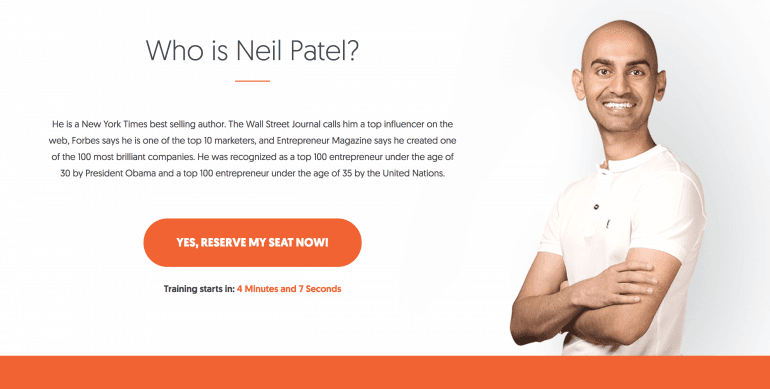
This type of content has been very effective for us at CoSchedule to connect the dots between educational content marketing and the CoSchedule marketing calendar.
17. Website Content
Think about traditional web page content. Some folks call this brochureware content—the kind that is slightly deeper in the funnel, existing to teach your prospects how your product or service solves their challenges.
This could also include e-commerce product pages and beyond.
Several years ago, Google’s Zero Moment Of Truth study found that most folks are likely to research 9.4 pieces of content before making a purchase decision, which makes this type of content extremely powerful for influencing sales.
18. White Papers
White papers often describe the benefits a prospective customer will get when they use a specific product or service from your business. These are most often used deeper in the funnel to encourage a prospect to make a purchase decision.
What I mean by this is simple: The following tactics can apply to any kind of content you create—blog posts, webinars, e-books, and beyond.
19. Guest
“Guesting”, in marketing terminology, is when you accept, publish, and share guest-created content. A common form of this is guest blogging, though you could embellish upon this tactic well-beyond your blog.
At CoSchedule, we have found that guest blogging is a great way to fill our editorial calendar year-round, and helps take some of the load off our team while keeping our blog feed full of quality content.
20. Collaboration
Similar to guesting, this is when you work together with another person or business to co-create content. This way, you tap into external knowledge and skill sets to create great content all while reaching a larger audience.

Great collaboration examples include e-books, webinars, and free guides/templates.
21. Interviews
Interview content is similar to Q&A where a host questions a guest. Interview formats work well for podcasts, videos, and even blog post content.

The process is usually really simple for both host + guest, which makes it a great form of collaborative content. Plus, as a host, you give your audience access to new insights while also dipping into your guest’s audience pool.
22. Q&A/Ask Me Anything
Questions and answers have always been an effective form of content. Simply ask your audience what questions they have that they’d like your advice on solving, then create content that provides the answer.
A similar format is the ever-increasing-in-popularity Ask Me Anything, that takes place on platforms like reddit and other up-vote communities. With this format, you literally dedicate time as an event to allow folks to ask questions which you answer live.
23. Quotes
Quotes are motivational/inspirational/entertaining/educational quips, usually from influencers. They are a powerful way to increase engagement on social media or to prove points within larger content pieces.
For example, if I wanted to prove why marketers need editorial calendars to organize their work, I could turn to an influencer in the content marketing industry for a quote on the subject:

24. Testimonials
Testimonials are a form of quote, but come directly from your customer base about your product or service. These work wonders as social proof on your website landing pages where your goal is to convert new prospects.
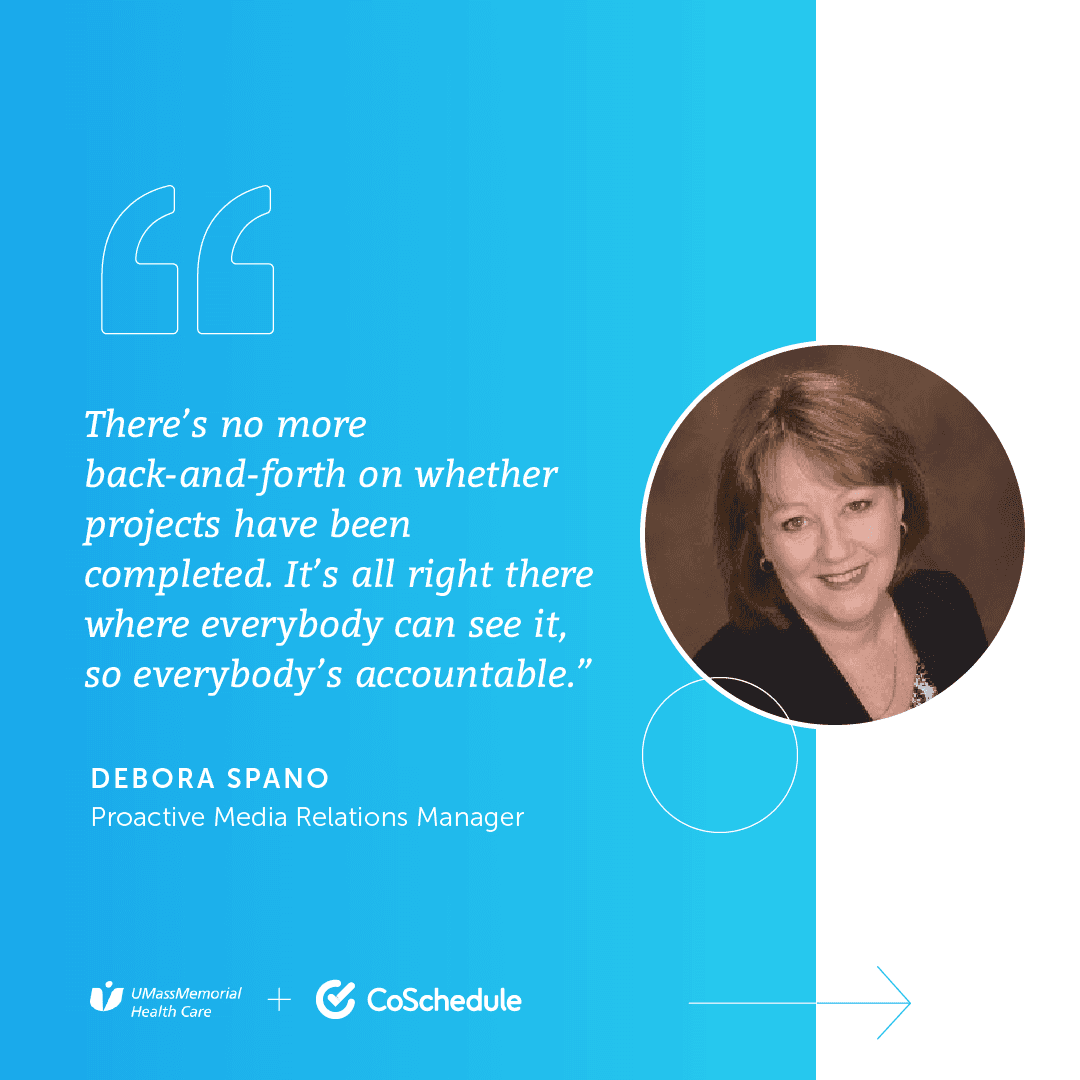
For example, here at CoSchedule we have a dedicated customer stories page in which we share success stories and testimonials — these also make for great social graphics (like the example above).
25. Company News
Your business is ever-evolving, growing quickly to better serve your customers. Every improvement you make is a story worth sharing with your audience.
Company news often takes the form of press releases, articles, media pitch packets, and outreach.
26. Product Announcements
Where company news addresses process improvements and culture stories, product announcements share what’s new with the actual service you sell.
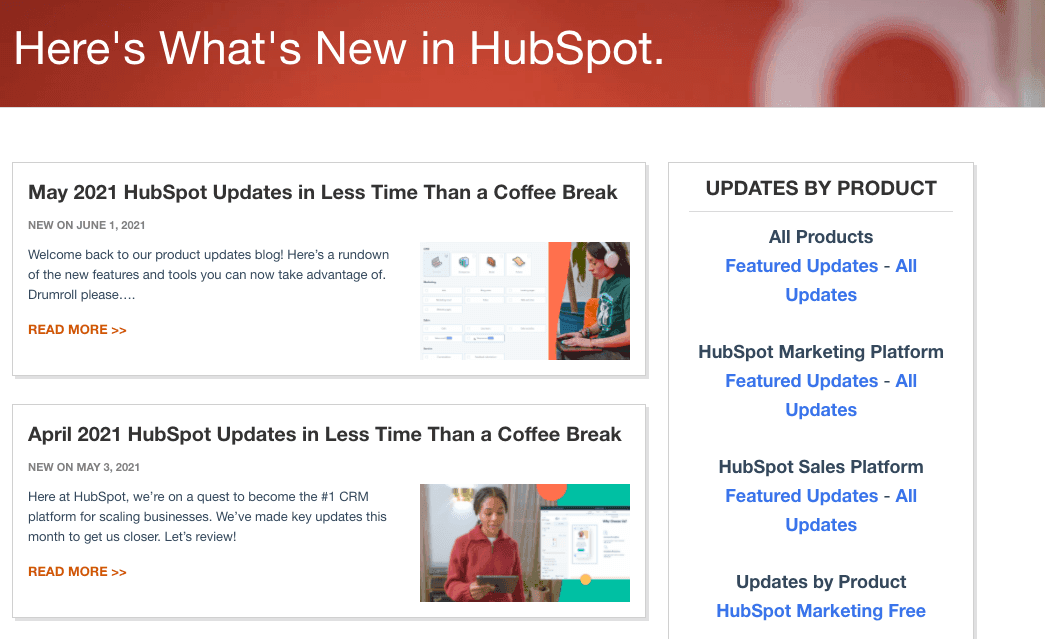
For software companies like CoSchedule, these announcements are often covered in feature blog posts and go well beyond into Product Hunt, Inc.com, social media messages, and more.
27. Comparisons
Are there competing products in your niche? Chances are, your audience may appreciate your professional experience on which option is best.
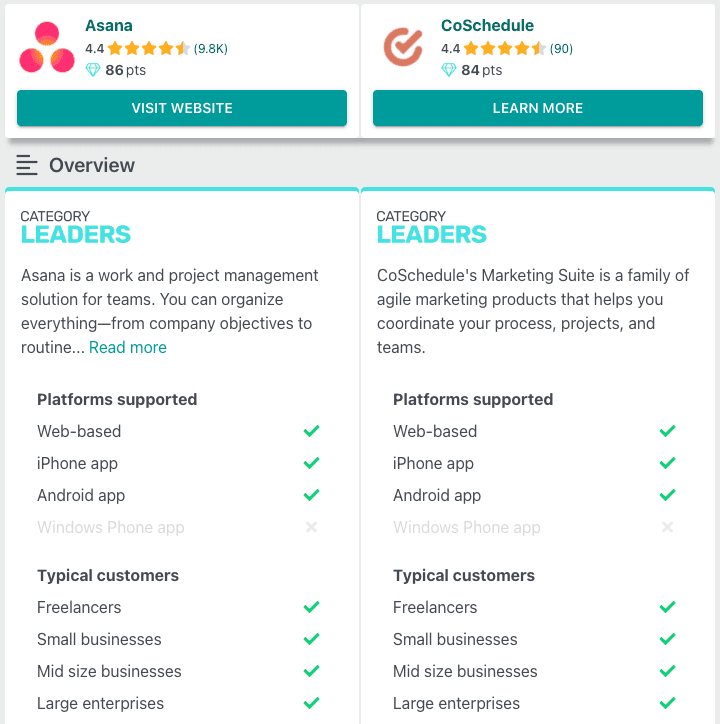
For example, sites like GetApp have a ton of comparisons for competing software companies, making it easy for consumers to make the decision of which option is best for them.
28. Contests
Contests often take the form of “enter to win”. You can ask your audience to do something, show you what they’ve done, and they get the opportunity to receive something awesome.

29. Search Engine Optimization
You can optimize many forms of content to help your audience find what you publish via search engines. This form is often applied in all online content as a long-tail play of generating traffic long after your content publishes.
Marketing is great, but having a strong website is essential to converting the traffic gained through your marketing outreach. Here are a few ways to do just that.
30. Calculators
Calculators are handy for helping your audience discover how much time/money/resources/etc. they could save by using your product or service.

31. Forums
Hosting your own forum gives your audience a way to ask questions and field answers from their peers. This type of content builds a community around your brand, empowering user-generated content.
32. News Releases
Something exciting happened at your business? The old school news release can still work for generating media coverage and customer attention.

33. Landing Pages
Landing pages help you share the benefits of your product, service, or even piece of content while optimizing your visitors to convert.
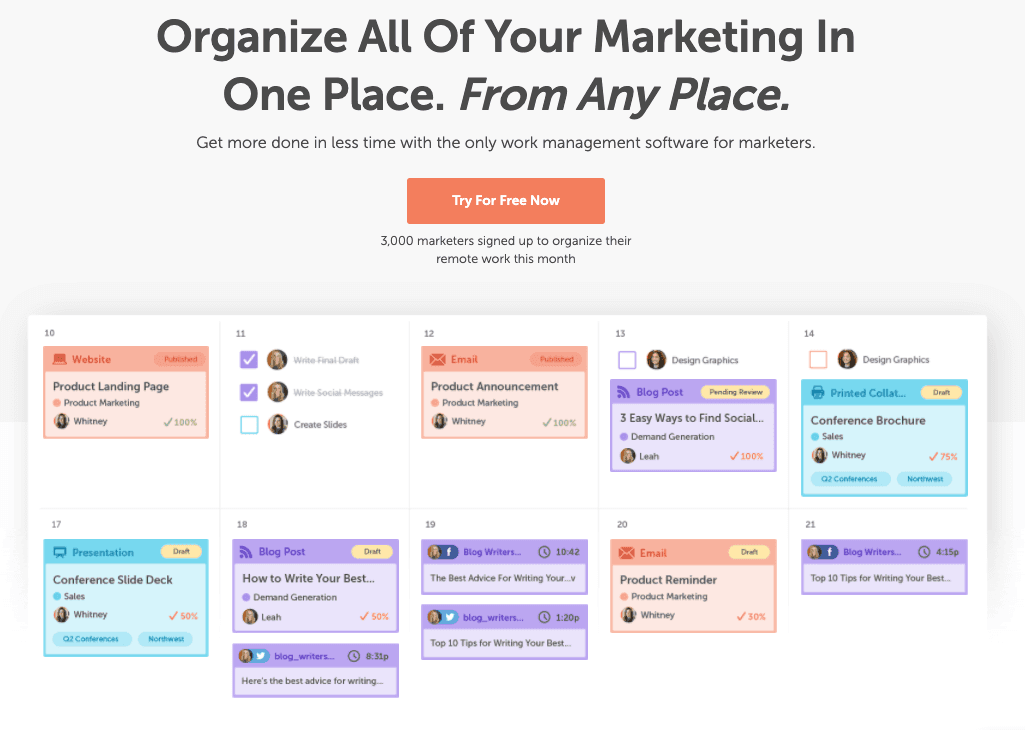
These may include testimonials, case studies, and stats to teach your prospects how they are missing out by not using what you’re marketing.
34. Feature Pages
The feature page is a type of landing page dedicated to covering the specifics of one product or service. This works particularly well when coupled with paid search engine marketing to direct specific, niche keyword traffic to your website.
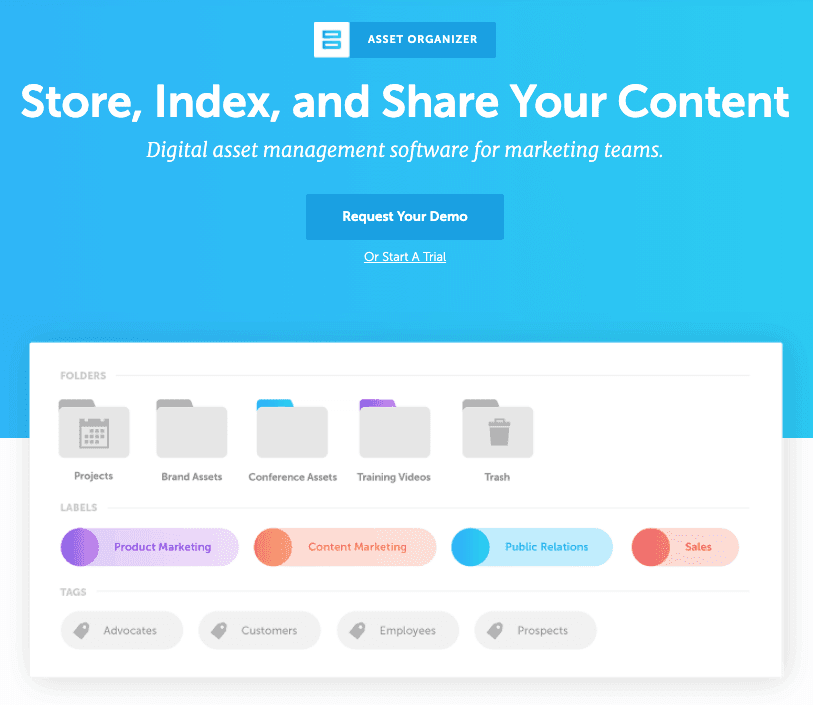
For example, the Asset Organizer within CoSchedule’s Marketing Suite has its own dedicated web page where people can learn more about this feature.
35. Microsites
Have a bit more to say than what a simple landing or feature page can’t quite do? Microsites work well for communicating the story around a particular campaign.

This microsite from Red Bull retraces Karl Metzer’s steps as he walked the Appalachian Trail in record time, highlighting the brand’s bold campaign.
36. Wikis/Dictionaries
You’ve probably visited Wikipedia a few times by this point… which is largely made from user-generated content + editing and policing. Like forums, Wikis give your audience the opportunity to share knowledge among their peers while positioning your brand as the go-to source for that kind of niche information.
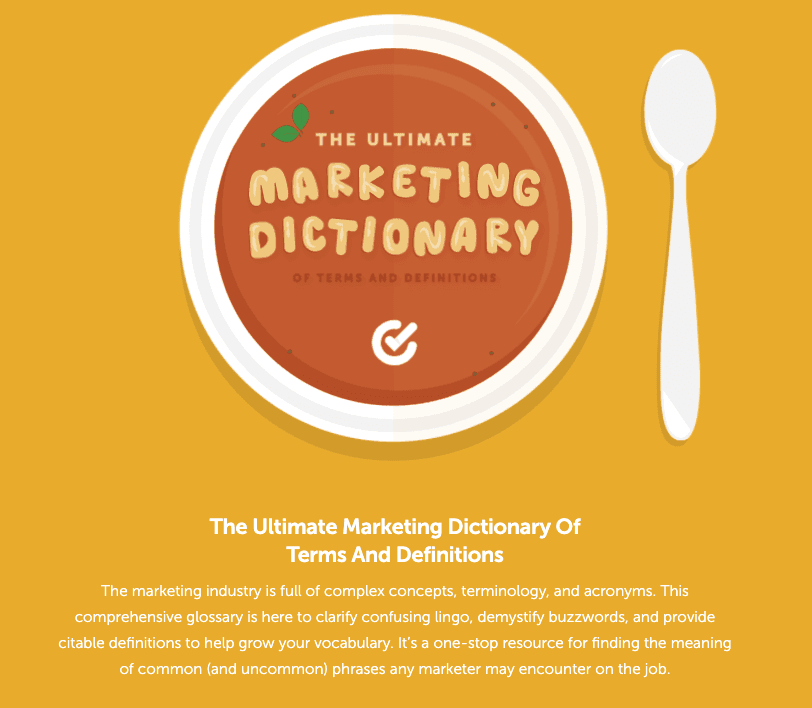
A similar concept is creating an industry-specific dictionary, something we’ve done here at CoSchedule. By filling this dictionary with commonly searched marketing terms, we are able to position ourselves as marketing thought leaders and drive more traffic to other blog content.
37. In-App Messages
If you manage an extranet (a website specifically dedicated to providing customer content gated behind a login) or a SaaS product, in-app messages work really well for reaching your users. Check out a tool like Intercom to get started.
If you’re reading this, you know that there is value in blog content. Here are a few ways you can create blog articles that resonate with your audience.
38. How To
This is the classic educational tactic where you literally teach a reader how to solve a problem. This method involves giving step-by-step, actionable advice your readers follow as they solve a challenge by themselves (albeit, with your extremely helpful advice).
39. Lists
List posts (like this one!) often provide ideas rather than education. Think of headlines like 10 Ways To Get More Traffic To Your Content where finding the ideas is often more important that learning the specifics of actually executing them.
40. Questions
The headline of your blog post is a question. The body of your blog posts is the answer. This type of content works particularly well for beginner content creators to establish a content foundation for your blog.
41. Why
Why blog posts work well for explaining how things are. Think of headlines like Why You Don’t Need Approval (+5 Bonus *Unconventional* Lean Marketing Ideas).
These kinds of blog posts work well for opinions and rants, but also factual explanations.
42. New Method
Brian Dean from Backlinko shared a process he coined to rank higher in search engines called the Skyscraper Technique. This is a new method, and is now a term many in the content marketing + SEO community reference regularly. By naming the process he shared, Brian gets a lot of cred + backlinks to his original content.
43. Roundups
Ye olde roundup: Find the best content in your niche on a specific subject, then write a list post linking to those resources. You can do roundups of the week, month, year, etc.
44. Compiled Research
Your audience likely has questions you can answer by curating data points into one comprehensive blog post.
For example, CoSchedule’s audience (that’s you!) consistently asked us about the best times to post on social media. We answered the question by compiling all of the different research studies we could find on the topic into a single blog post that provides the best times to post on every major social network.
That blog post was so successful, we used the same methodology to write blog posts on the best times to send email and how often to post on social media. These compiled research blog posts have all performed well and driven a significant amount of traffic to other parts of our site.
45. Original Research
My friend, Andy Crestodina, does an original research study every year to understand the progress made in the blogging industry. By publishing this original research, he gains tons of backlinks because he finds answers to common questions his following asks.
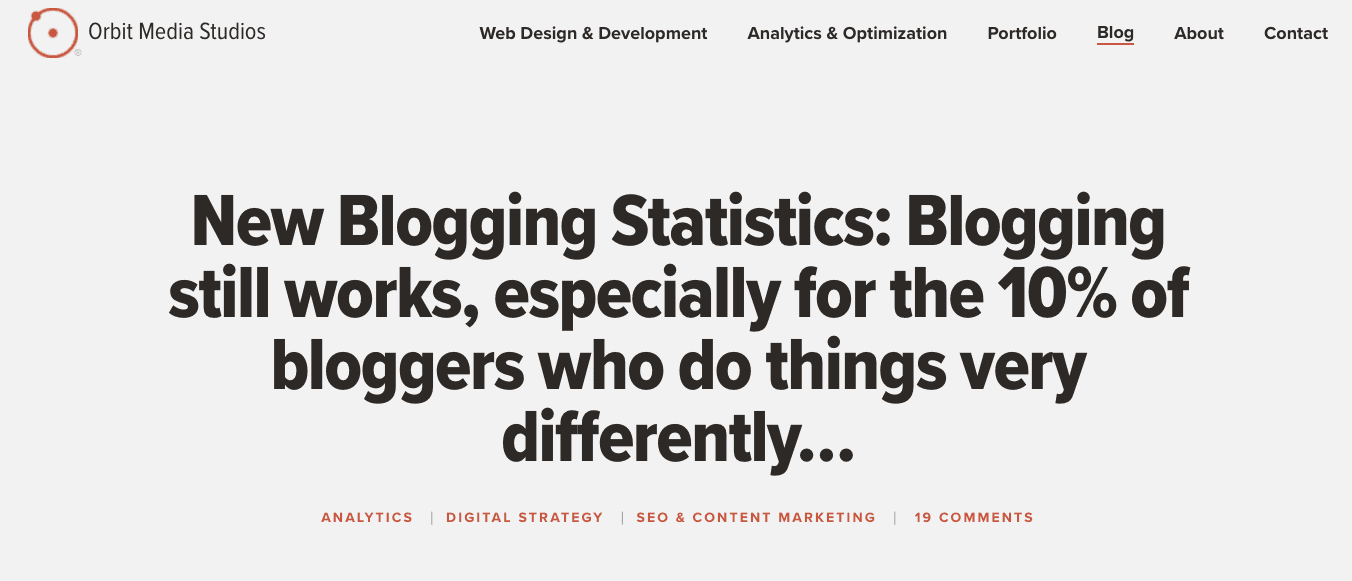
You can do the same by writing a simple survey with a tool like SurveyMonkey and asking your followers to provide their insight.
Recommended Listening: How To Boost Your Results With Original Research As A Marketing Tactic With Andy Crestodina From Orbit Media Studios [ACM 015]
46. Best Practices
Sometimes, there just isn’t data to back up what your audience needs to know. This is a perfect use case for best practice content.
You can use best practice blog posts to share step-by-step processes, theory-driven anecdotes, and more. Just be transparent when you suggest the best practice is your opinion and/or industry-wide accepted.
47. Transparency
Buffer does a great job of sharing transparent content, and have an entire page on their site dedicated to sharing their company culture and how they run their workplace.

Transparent content shares your process behind the scenes (similar to How I… content). Additionally, it can go even deeper, like sharing the entire company’s salaries, as Buffer does with its Transparency blog.
It’s a great way to build trust with your audience. And as we marketers know, people buy from people they know, like, and trust.
48. Opinions
Like traditional newspapers often have Opinion sections for articles not backed by data, but rather, by anecdotes, you can also share your thoughts and rants on your blog to inspire engagement.
Controversial content makes your readers question a behavior, belief, or sense of belonging. Tying that into your blog titles practically begs for clicks + readership.
49. How I…
These are often personal success stories that help your audience solve their own problems.
For example, when we launched our Marketing Strategy e-course at CoSchedule, I found out that many of you want to increase your email subscribers and traffic. With this knowledge I could share the tactics I’ve personally used to help increase our subscribers and traffic at CoSchedule in a How I… blog post with a title like: How I Increased Blog Traffic From 40k Pageviews Per Month To 1M+ In Less Than 2 Years.
It’s kinda like a case study that shares your process.
Recommended Example: How We Launched 4 Features in Less Than 6 Weeks with a Culture of Shipping
50. Product Reviews
Have you come across a product or book recently you know your audience would love? Write a review as a blog post.
At CoSchedule, we actually reward this behavior from our users by offering them a discount when they publish and share their reviews. It helps us encourage user-generated content that helps CoSchedule reach a larger audience.
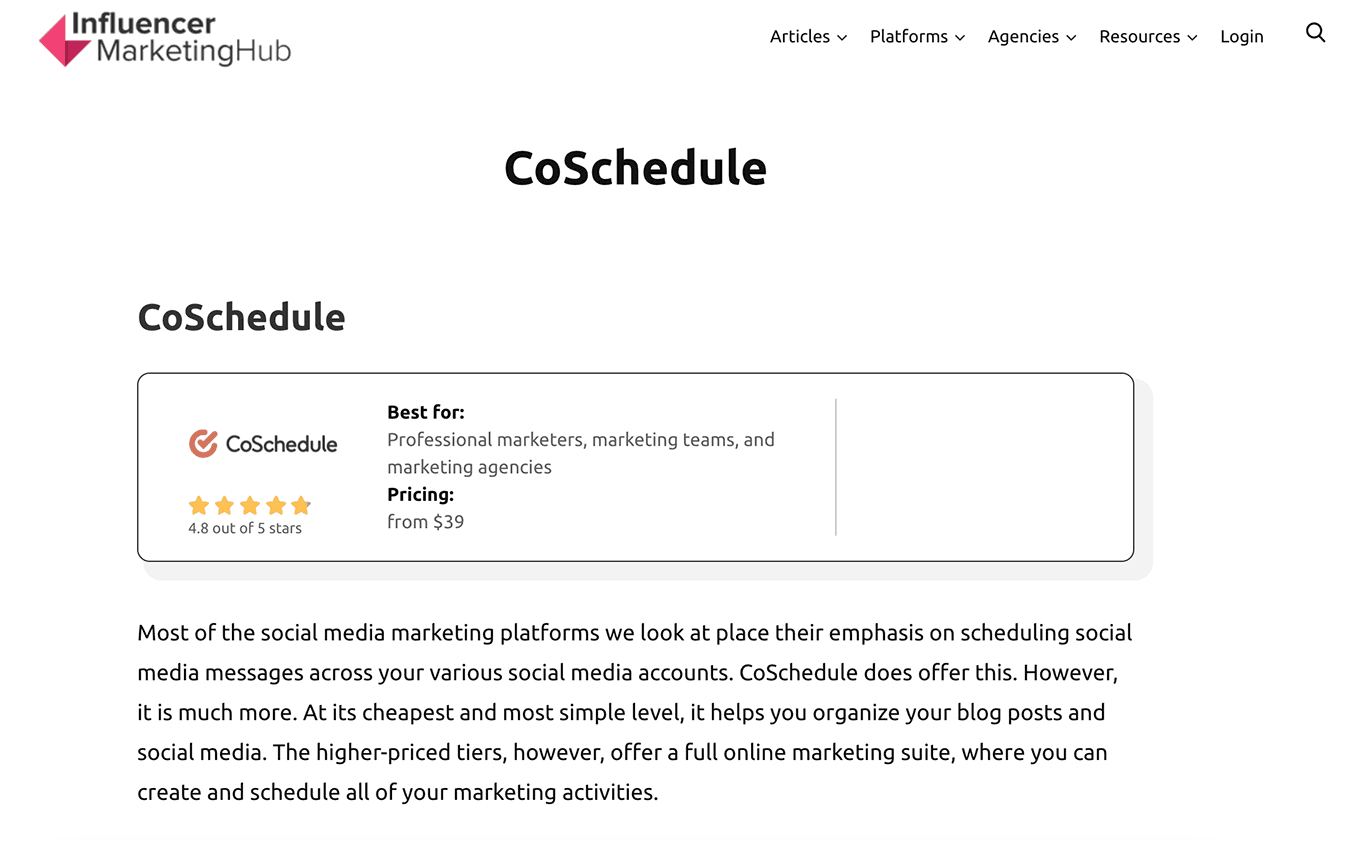
51. Culture
Culture blog posts share the philosophy behind the scenes at your business. For example, at CoSchedule we have an entire blog category dedicated to sharing stories of our culture with topics like:
- Why Every One Of Our New Employees Does A Book Report Within Their First 3 Months
- How To Make Interns A Successful Part Of Your Marketing Team
- 5 Simple Questions That Will Help You Stay Focused On What Matters
What stories could you share that make your culture unique? Those ideas can inspire thought leadership within your industry; you just need to share them!
52. Metaphors
Have you ever seen a new blog post and felt like you’ve already read it a dozen times? Adding a new metaphor (angle) can add a lot of flair to an overdone topic.

53. Predictions
Have data to prove something big is going to happen in your industry? What about an opinion of what is bound to influence your industry next year? This type of content sparks conversation, and definitely exemplifies thought leadership for your niche.
For example, I often look to Joe Pulizzi in the content marketing industry for his foresight on the direction our industry is heading. He’s captured my attention because of his predictions that he shares frequently through his podcast, emails, and blog posts.
54. Failures
Learning what not to do is often as important as learning what to do. Sharing your mistakes to help others avoid making them not only shows your humanity, but can be extremely helpful for your audience.

55. Republishing
Do you have old blog posts that would be even better if you updated + optimized them a little? Take the time to improve those blog posts and publish them as if they were brand new pieces of content.
This process not only saves time (you don’t have to create a new blog post from scratch), but can help improve your rankings in search engines, increase the email subscribers you receive from that content, and boost your traffic, too.
This is what we did with this post!
56. Comments
You can build industry credibility and thought leadership by both reading social media comments and commenting on others’ social posts within your niche. This process can also help you develop new ideas for content and embellish upon others’ ideas.
Who doesn’t love listening to some great audio content? This sort of content can broaden your reach for people who don’t want to take the time to watch a video or read your content.
57. Audio Blog Posts
Social Media Examiner publishes blog posts, waits for the stats to roll in, and embeds blog post-specific podcasts into their most successful content.
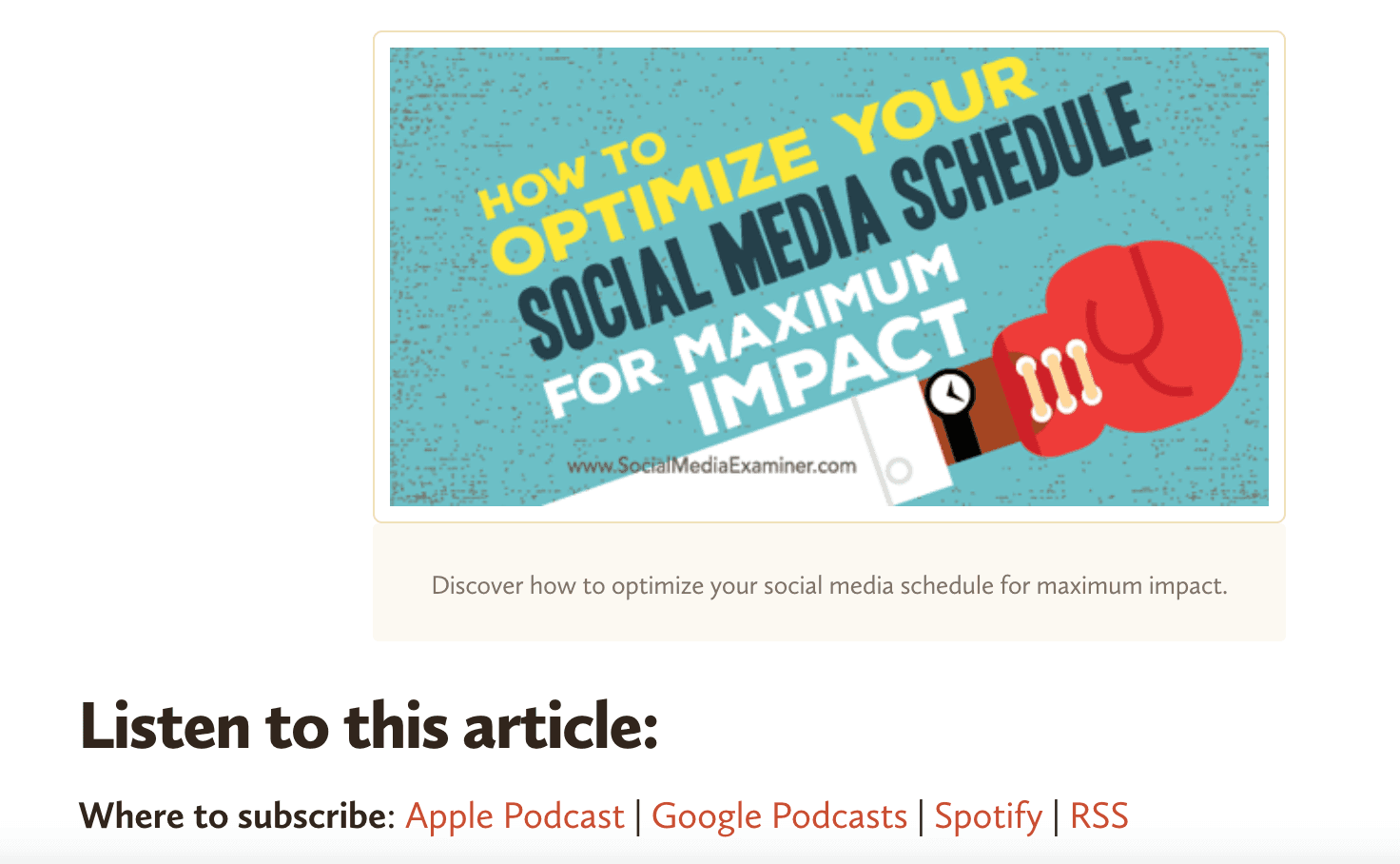
It’s a handy way to help their audience listen to the articles instead of reading them. Kinda like storytime for your followers. :)
58. Interview Podcasts
In this format, you typically host a guest in a Q&A format. It’s what we do at CoSchedule with our popular Actionable Marketing Podcast.
We write brand new questions for each guest based on their talents. Alternatively, you can do an interview-style podcast and always ask the same questions like Entrepreneur On Fire.
59. Segment Podcasts
Have you ever listened to This Old Marketing with Robert Rose and Joe Pulizzi from Content Marketing Institute? This is an example of a segmented podcast with two co-hosts.
60. Solo Podcasts
This is when it’s only you speaking. As Grammar Girl demonstrates, these are good for answering common questions in quick-hitting episodes.
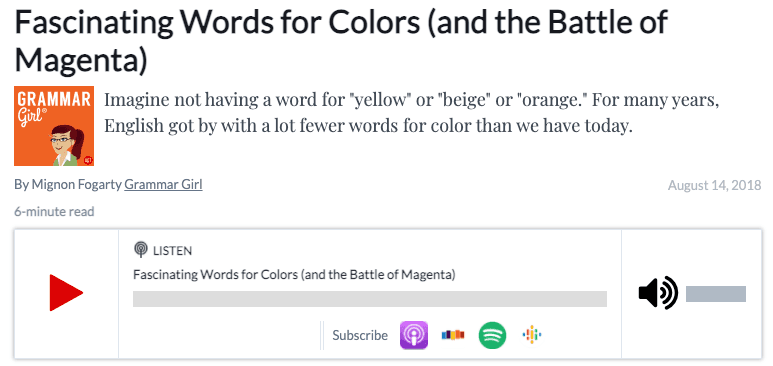
61. Audio Books
That e-book you created earlier? Yeah, you can record yourself reading it out loud, then embed it in a blog post. Boom!
Email marketing isn’t dead. In fact, it may be one of the most valuable tools in your marketing kit.
62. Blog Post Emails
At CoSchedule, we’ve found our most successful blog posts are complemented by what we call a per post email. That means we send an email to our list specifically dedicated to getting more readers to check out the content.
If you’re like us, however, you publish up to 10 blog posts a week. That means segmenting your list is extremely important for success so you don’t over-email your audience.
An easy way to do that is by sending new blog posts to those subscribers who have already clicked through to read similar content from your older emails. Many email service providers allow you to segment based on opens and clicks, which allows you to send more email to fewer—more targeted—subscribers.
63. Email Automation
While there are many use cases for automation, an easy one to start with is a track for brand new content subscribers. Upon signup, send a welcome email, then test the waters with additional emails based on the first email’s opens and link clicks.
Video is vital to any modern marketing strategy, and these tactics can help you create and share it the best way possible.
64. Vlogs
It’s a blog post. But done with in video format.
Here’s an example from DigitalMarketer, whose YouTube channel is full of actionable vlogs that can rival many companies’ blog output. They repurpose content from their blog and turn it into videos for their channel, giving their audience more options for consuming their content.
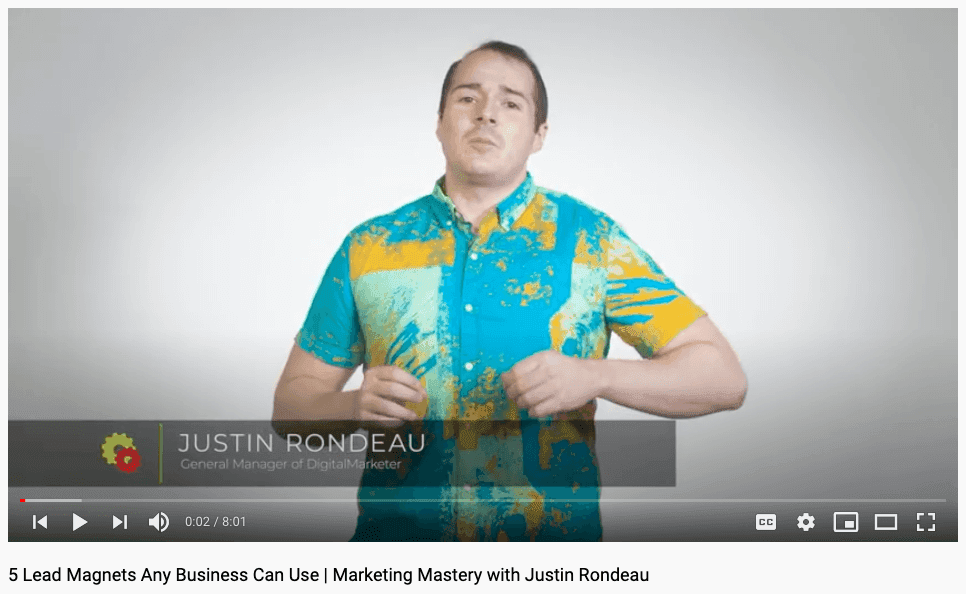
65. Demos
A product demonstration may be just what your prospects need to make a purchase decision. Often, these videos blatantly show how to do something desirable with your product to an audience who already understands the benefits your solution provides.

66. Live Streams
Events make for amazing live streaming opportunities, particularly for those who just couldn’t be physically present. Think conferences here.
Facebook Live also gives you the opportunity to informally engage with your audience with video.
67. Culture
Culture videos are a great way to give your audience a behind-the-scenes look into your business. It gives them the chance to “meet” your employees, see the faces of those who they interact with on a daily basis, and learn how you solve problems with your team.
#OverheardAtCoSchedule is our culture video series.
Events can be great ways to garner buzz around your brand, and provide excellent opportunities to network and grow your circle of influence within your niche.
68. Countdowns
Have you ever thought that the ball drop event at New York Times Square every New Year’s Eve is really… just… a countdown?
Is there an event in your industry that would work for you to increase excitement with a countdown?
For your webinars, it also works well to have countdown timers on your landing pages to increase your conversions. (Yep, that whole sense of urgency/fear of missing out definitely helps here!)
69. Workshops
Workshops work particularly well in tandem with courses and conferences. These are breakout sessions to teach something a little more in-depth than what you’d get with surface-level understanding from a standard session.
Instead of a speaker, think of yourself (as the host) like a teacher. Interaction like a classroom is expected among students and teachers, even when your workshop is digital with a tool like Zoom.
70. Conferences
These can be in person or virtual summits. Think speakers, presentations, and training sessions + exhibit halls.
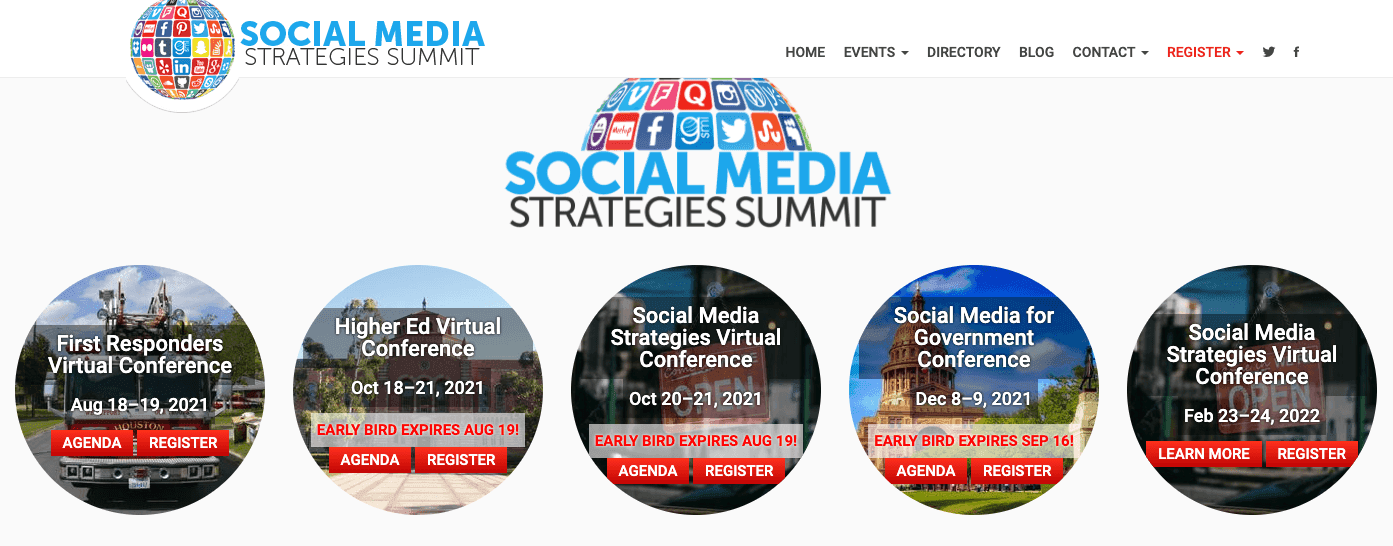
71. Meetups
Is a conference just a bit too much? You can go more informal + local with Meetups.

For example, Full Stack Fargo is a software engineering and startup community in our local area. Anyone from the Fargo, North Dakota community can join in to see local entrepreneurs present on a variety of topics within the software and startup space. It’s a great way to meet people in your community who are passionate about the same things you are.
72. Twitter Chats
Choose a specific time and day to meet every week, brainstorm a hashtag everyone who’ll participate in the convo will use, plan a few topics + questions for those convos, and share your plans on Twitter. It’s seriously that easy to start your own Twitter chat.
73. Certification Academies
Here at CoSchedule, we offer a few certifications within our Actionable Marketing Institute courses. Our Social Media Strategy Certification is especially popular for those marketers trying to add new skills to their resume.
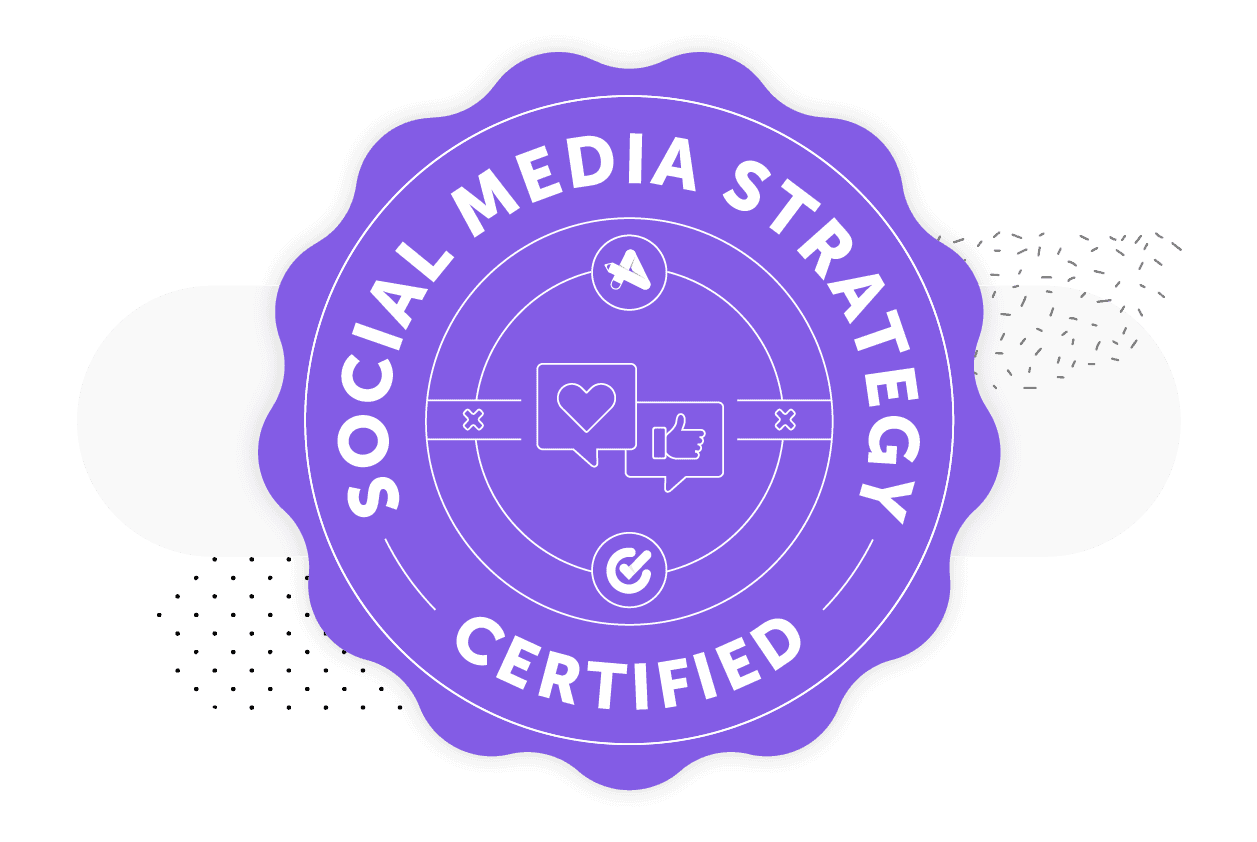
You know what offering a certification does? People list that they are certified everywhere on their social media profiles which causes their peers to look to us for the same education. Offering certifications like this is a smart content play to draw in the right kind of following.
74. Challenges
NaNoWriMo is National Novel Writing Month and takes place every November. It’s a challenge to write a novel in one month. The community challenges themselves to track progress, write thousands of words every day, and gives participants the opportunity to network, get pep talks, and meet peers online and in person.
What if your business could do something like that for your industry?
75. Live Chats
This is typically a sales play, with Live Chat showing on specific pages of your website (like your pricing page) to answer any questions that may prevent your prospects from converting. However, you can also use this as a marketing technique to engage and gather feedback, data, and ideas for marketing projects.
You know what it is, but here are a few ways to do things a little differently.
76. Forums/Quora/Reddit
Quora is the go-to source for questions + answers. You can gain big thought leadership points by freely sharing your knowledge there, and earn your business some credibility by including the company name in your title.
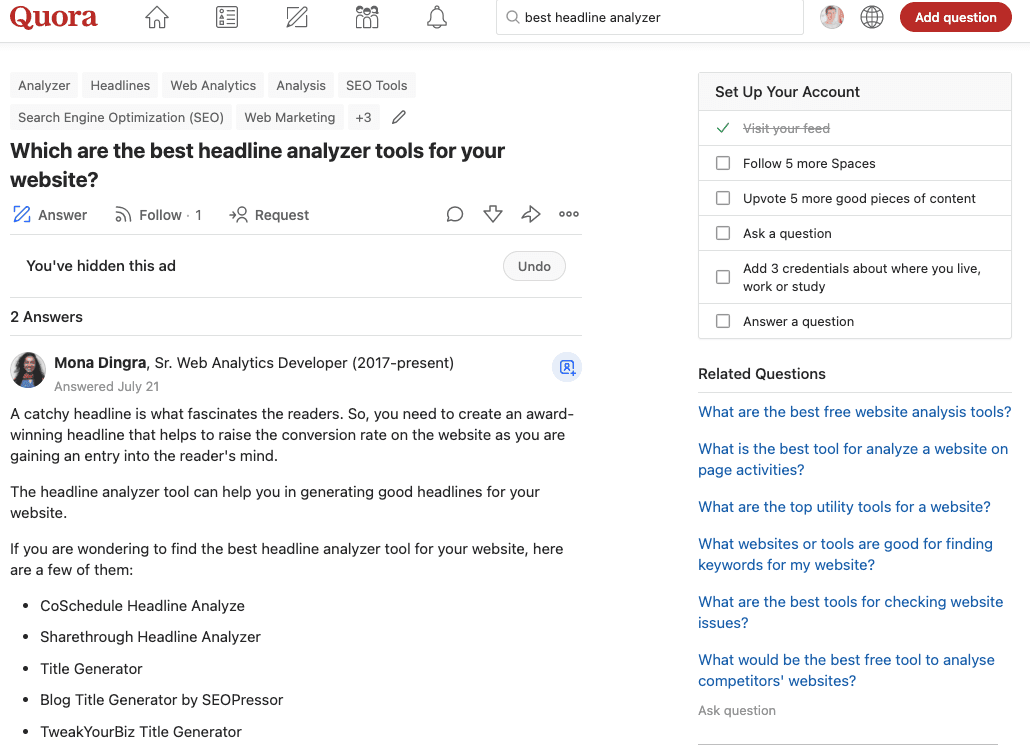
Similarly, hundreds of Reddit sub-communities are great resources for you to share content and actually get traffic back to your content.
77. Up-Vote/Aggregate Communities
The marketing and startup industries have several examples of successful up-vote communities, including Product Hunt, Inbound.org, and Growth Hackers.
Additionally, there are aggregate communities where you can share your knowledge:
- BizSugar: Small business management, marketing, finance, and tech
- Lobsters: Tech
- Hacker News: Startup/computer nerdery
- Triberr: Blog stuff
78. The Major Social Networks
You already know ’em:
- TikTok
- SnapChat
Everybody loves a good collab, right? These tactics will help take some of the weight off your teams’ shoulders, and bring in an entirely new audience to your content.
79. Syndication
This is when you literally take an article from your website and publish it somewhere else. It can be an effective way to increase your exposure, like how Buffer syndicated their blog content to popular publications like Fast Company and The Next Web.
The Original Blog Post: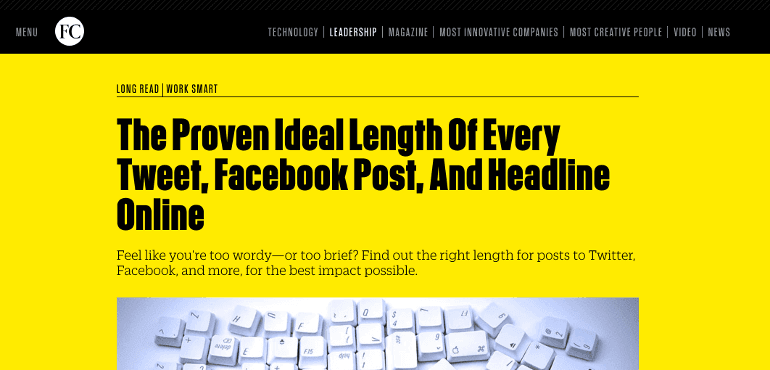
Buffer’s Syndication:

80. Guest Blog Posts
Just like you can (and should) accept guest blog content for your own blog, you can (and should) write content for other blogs in your niche.
Recommended Reading: How To Implement A Guest Blogging Process With Jess Ostroff From Don’t Panic Management/Convince And Convert [ACM 013]
81. Guest Podcasts
Instead of you hosting your own podcast, you can pitch yourself to be a guest on other folks’ podcasts. According to Cheryl Conner, Forbes Contributor, this is a great idea because…
“You’ve eliminated the costs and the time it takes to prepare and host an ongoing show. Better still, you gain immediate access to an exponentially larger audience, since you become the new value-add for each of the podcaster’s tribes. It’s crowdsourcing, writ large.”
82. Guest Webinars
This is when you, as a guest, share your knowledge with another business’ audience via a webinar. We’ve done it at CoSchedule with companies like Evernote, SEMrush, ActiveCampaign, and Smart Passive Income.
83. Referrals
If you’re a SaaS company, give your users a referral URL they can share with their friends in exchange for a discount for your software. It’s a great way to encourage word of mouth while rewarding your biggest fans for being awesome.
84. Pitch Packets
I went to a conference recently and listened to a PR/marketer talk about a sunflower butter client of hers. They pulled together recipes, supplies, and bottles of the sunflower butter to influential food bloggers.
So what happened? They got lots of publicity from food bloggers with their own spins on the recipes, along with lots of new recipes for the sunflower butter brand. Very nice!
85. Public Service Announcements (PSAs)
A couple of years ago, a hospital in Fargo, North Dakota, recorded several PSAs and shared them through local radio stations. These were helpful tips on how to spot when folks were having a heart attack so you could save their lives, what to look for to understand if someone was having a stroke, and so on.
Those PSAs all made the hospital feel like they really cared about the citizens in our community, which was a fantastic way to build their brand image (especially given their larger competition).
86. Awards
When I worked as a marketer for an electrical distributor, we gave awards every year to our best suppliers and customers. It was a way for our business to recognize the collaborative efforts to grow together.
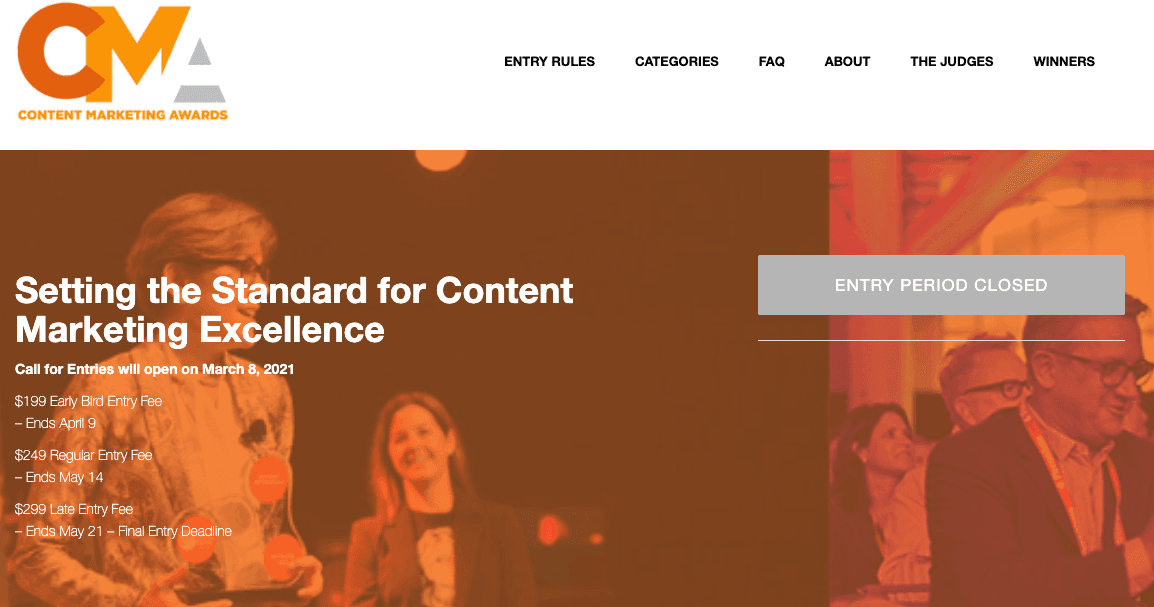
87. Polls
Polls are simple one-question surveys with multiple choice answers. You can use tools already at your disposal like Twitter polls to gather feedback on content ideas and beyond.
88. Survey
You can use surveys to gather data for original research, content ideas, product improvements, and a whole lot more. Surveys are a particularly helpful tool to help you get to know your audience better, and even build audience personas (if that’s your thing).
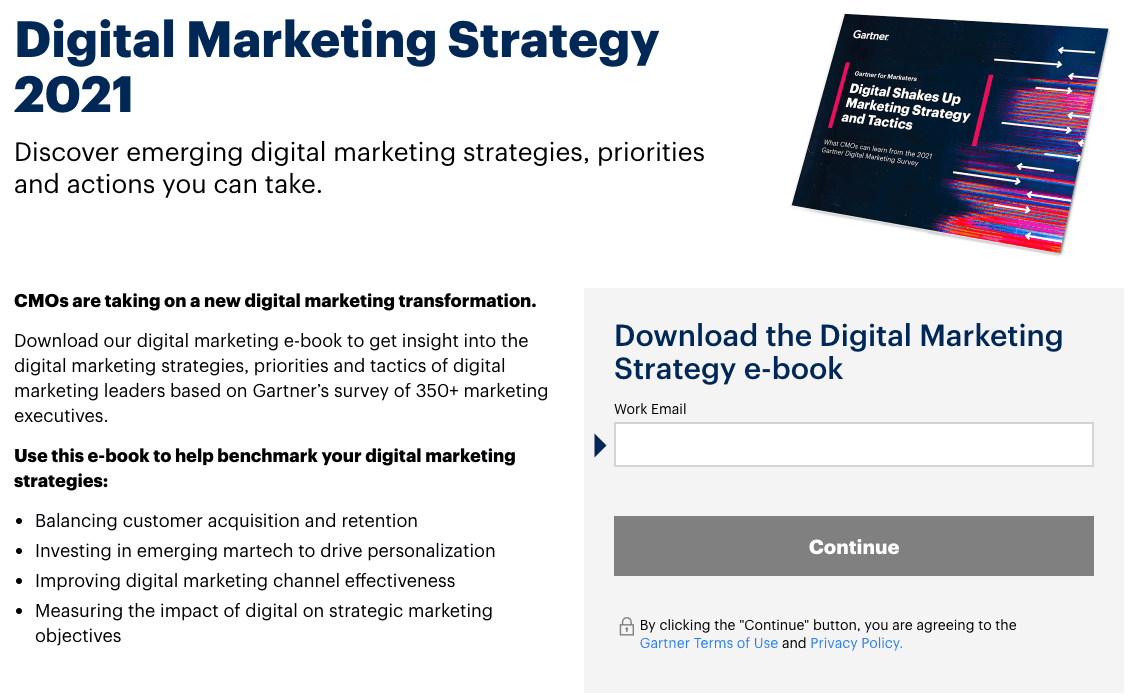
89. Quiz
Quizzes can be entertaining + reinforce the education you’ve provided through content marketing. For example, in the latest Social Media Strategy course on the Actionable Marketing Institute, chapters are followed by quizzes which ensure students have the necessary information to move on from each lesson.
90. Curated Content Hub
Tools like Uberflip and Pressly exist to help you provide valuable content to your audience (even if you didn’t publish it at your business). A curated content hub is a library of content you build for your audience from sources around the web.
<“div class=”dividing-section”>Print
Print is no longer used much in marketing in this digital age, so using these print tactics can help you stand out from your competition.
91. Swag
At CoSchedule, we have three different swag packets we ship to awesome customers, fans, and folks who help us out. The kits include t-shirts, posters, stickers, hand-written thank you letters, and more.
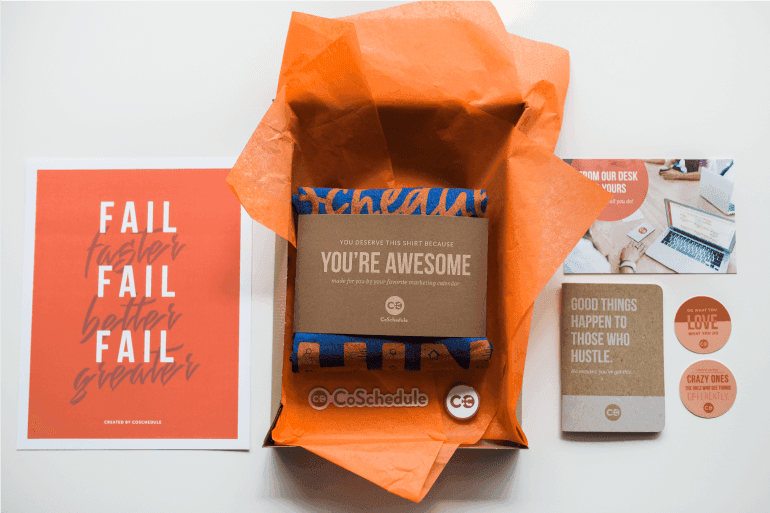
92. Magazines
Content Marketing Institute publishes and distributes its Chief Content Officer magazine every other month. It’s a great way to connect with folks who want to disconnect from tech.
93. Fliers/Brochures/Tear Sheets
Think small local businesses with physical offices. These print marketing materials are essential to leave in your customers’ hands as they walk out the door.
These paid tactics can be extremely successful within a wider marketing mix. One note — A/B test your paid marketing tactics to determine what will succeed for you.
94. Sponsorships
Is there a conference that is popular with your audience? You can sponsor events like that to support the industry + build credibility with your following.
95. Facebook Ads
Facebook targeting gives you an advanced way to reach a larger audience who is likely to be interested in your products or services. You can target your ads by location + interests + behaviors and a whole lot more to make the customer acquisition cost worth your while.
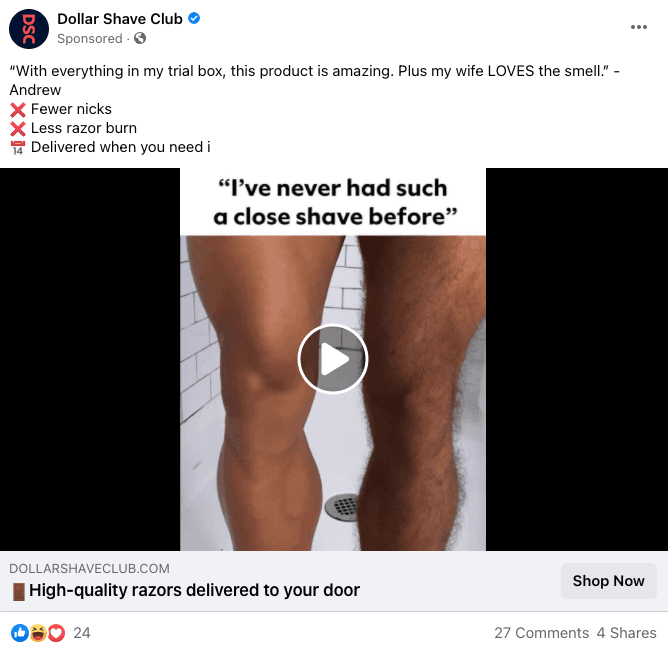
96. AdWords
Paid search puts your results at the top of the first page of Google. It’s handy for targeting synonyms your audience uses to find the products or services you offer, which is particularly helpful when you don’t organically rank for those keywords.
97. Native Advertising/Sponsored Content
This is when you pay a publication to place a piece of content you’ve created. It’s popular with magazine-esque publications, but you’ll also see many successful blogs placing guest posts as sponsored content.
98. Remarketing
Imagine visiting a website’s landing page about pour-over coffee carafes, but you didn’t buy. You go to another website, and now you see an ad from the website you were previously on about pour-over coffee carafes.
That’s the power of remarketing.
99. Ads/Billboards
Magazine ads, newspaper ads, billboards, and the like are traditional “Mad Men” marketing tactics. The key to measurement here is to provide a way for your customers to tell you why/where they learned about your product or service.

By gated content types, I mean the valuable content you give away in exchange for an email address. You can use tools like LeadBoxes from LeadPages to embed a link into a piece of content that includes a form. All your visitors need to do is provide their email address and you’ll email them their free resource.
Valuable gated content is the best way to build your email list. Period.
100. Guides
Let’s say you wrote a lengthy blog post. A guide could be the blog post in a PDF version, a “Cliff’s Notes” version of the blog post, or just highlight the big takeaways from the blog post.
101. Worksheets
Worksheets are great for complementing blog posts that require following a process. They help your readers work through the ideas you’re teaching them on their own so they leave your website with something tangible.
At CoSchedule, we’ve found giving away free editable worksheets in Microsoft Word is extremely useful and immediately actionable.
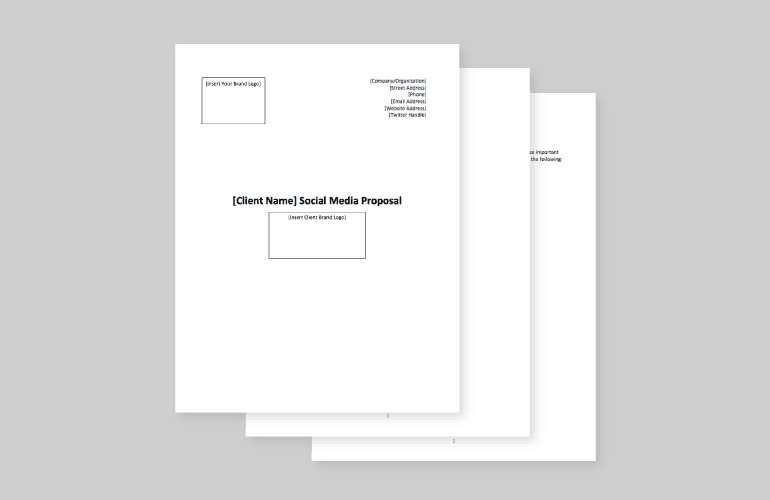
102. Templates
Templates complement blog content that requires data punching very nicely. Alternatively, a few of the templates we’ve given away at CoSchedule include slide decks (for pitching new strategies to your team), Photoshop CC action (to automatically size every image to the perfect size for every social media network), and even spreadsheets (for managing project sprints and more).

103. Checklists
Checklists are great for helping your audience cross their Ts and dot their Is when implementing a process. They complement blog posts well that cover process and actionable step-by-step information.
104. Research Reports
If you’re thinking about conducting original research and using a survey to gather your data, research reports are a great incentive to give your survey takers. A research report compiles your findings in a single document (typically into a PDF).
105. Posters/Desktop Backgrounds
We’ve gated a few posters and desktop backgrounds for specific blog posts on the CoSchedule blog. These help reinforce an idea by helping your audience see them daily in the office.
106. Images
Giving away image bundles makes sense for some industries. For example, when we announced CoSchedule’s integration with Instagram, we gave away 100 Instagram-specific images in exchange for email addresses.

107. Mobile Apps
This can include gamification or utility. How can you provide value to your audience as they use their mobile devices like smartphones, tablets, and e-readers?
108. WordPress Plugins
Several years ago, CoSchedule created the Click To Tweet plugin for WordPress. We gave it away for free and optimized the plugin’s landing page to gather email subscribers.
Make blog posts easily shareable with the Click to Tweet #WordPress plugin from @CoSchedule.
109. Chrome Extensions
The Chrome browser helps businesses empower their customers with utility-driven tools (extensions) that live right in the browser itself.

110. Kit/Bundle
If giving away one content upgrade generates email subscribers, would giving away two pieces increase your conversion rate? We tested the waters, and it appears the more content upgrades you give away for a single email address, the more conversions you’ll get.
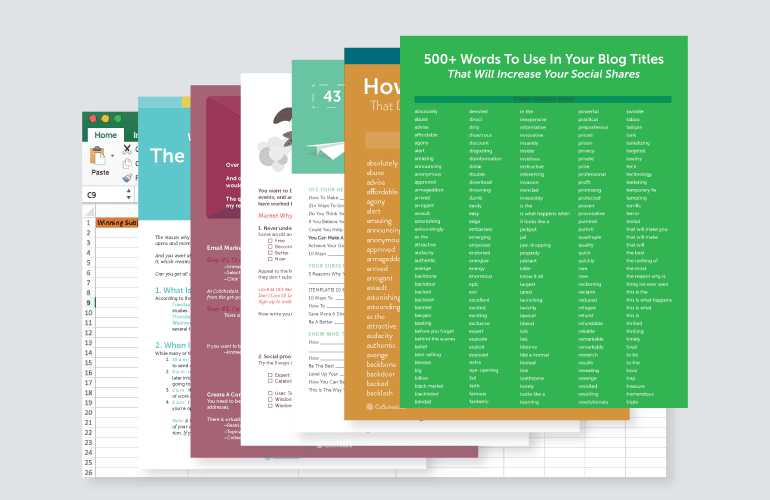
111. Tools
CoSchedule launched Headline Analyzer Studio as a way to help our audience get more social shares, higher search rankings, and ultimately more traffic. We analyzed the data from the best content we’ve seen run through CoSchedule and made it available in an easy-to-use tool that ranks a headline’s ability to emotionally connect with readers.
That free tool has generated thousands of email subscribers, backlinks, and online mentions.
112. Resource Library
Remember what I said about kits and bundles getting a higher conversion rate than only giving away a single piece of content in exchange for an email address? After you’ve created lots of content upgrades + tools, a resource library is a great way to repurpose your work in a high-conversion hub to generate more leads.

113. TPS Report
TPS Reports are documents dedicated to describing testing processes to enable repeatability and help people test their software updates.
Because. Well. Did you get the memo? ;)
You can use these standard content types and make your own custom content types within your CoSchedule marketing calendar. What will you organize now?